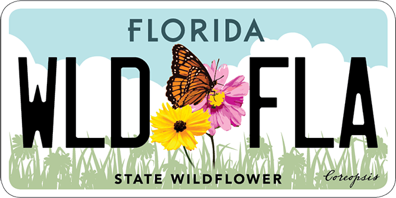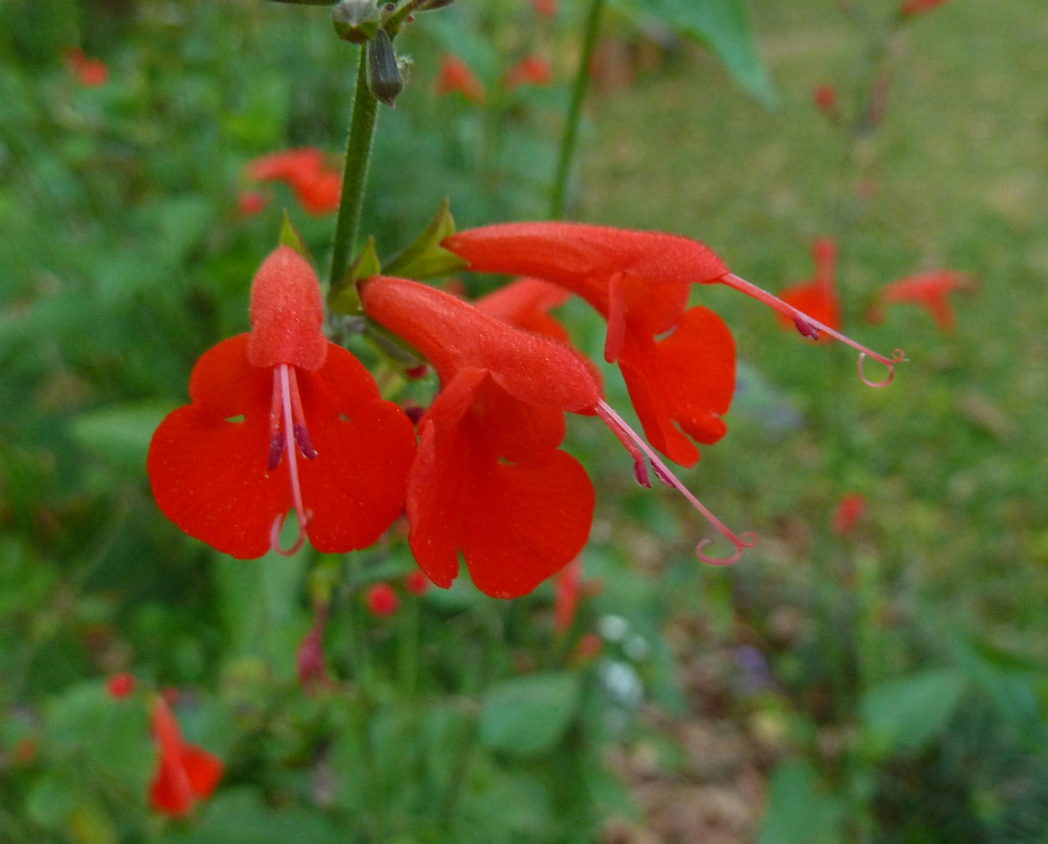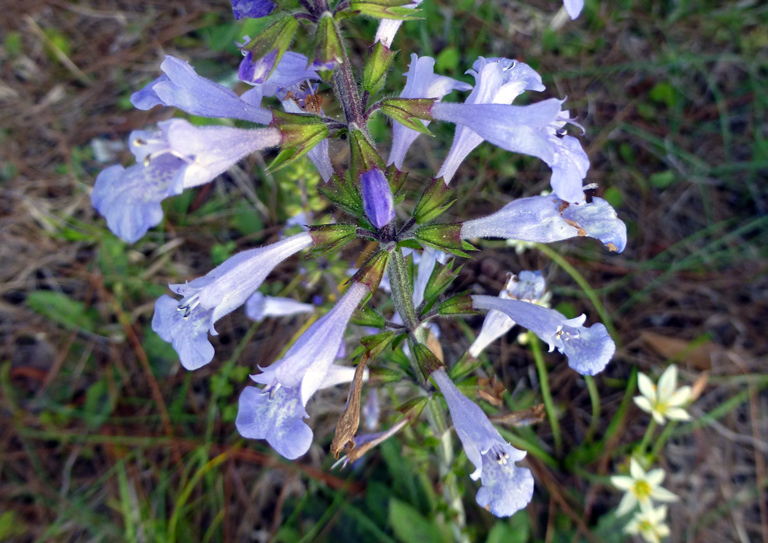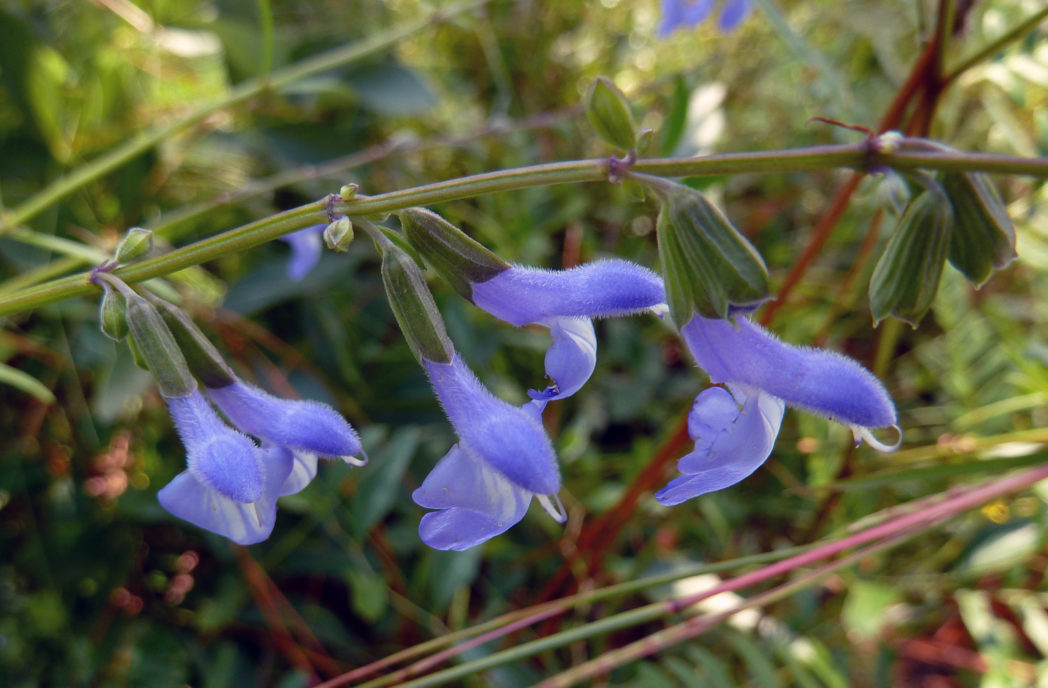Tropical sage
Pictured above: Tropical sage (Salvia coccinea) by Eleanor Dietrich. Click on terms for botanical definitions. View post as a PDF.
Known by many names — Scarlet sage, Red salvia, Blood sage — Tropical sage (Salvia coccinea) is a versatile perennial wildflower and a steadfast addition to any wildflower garden. No pollinator can resist its bright red flowers, but it is particularly attractive to bees, large butterflies and hummingbirds. It typically blooms in summer and fall, but can bloom year-round in many parts of the state. It occurs naturally in hammocks, woodlands and disturbed sites.
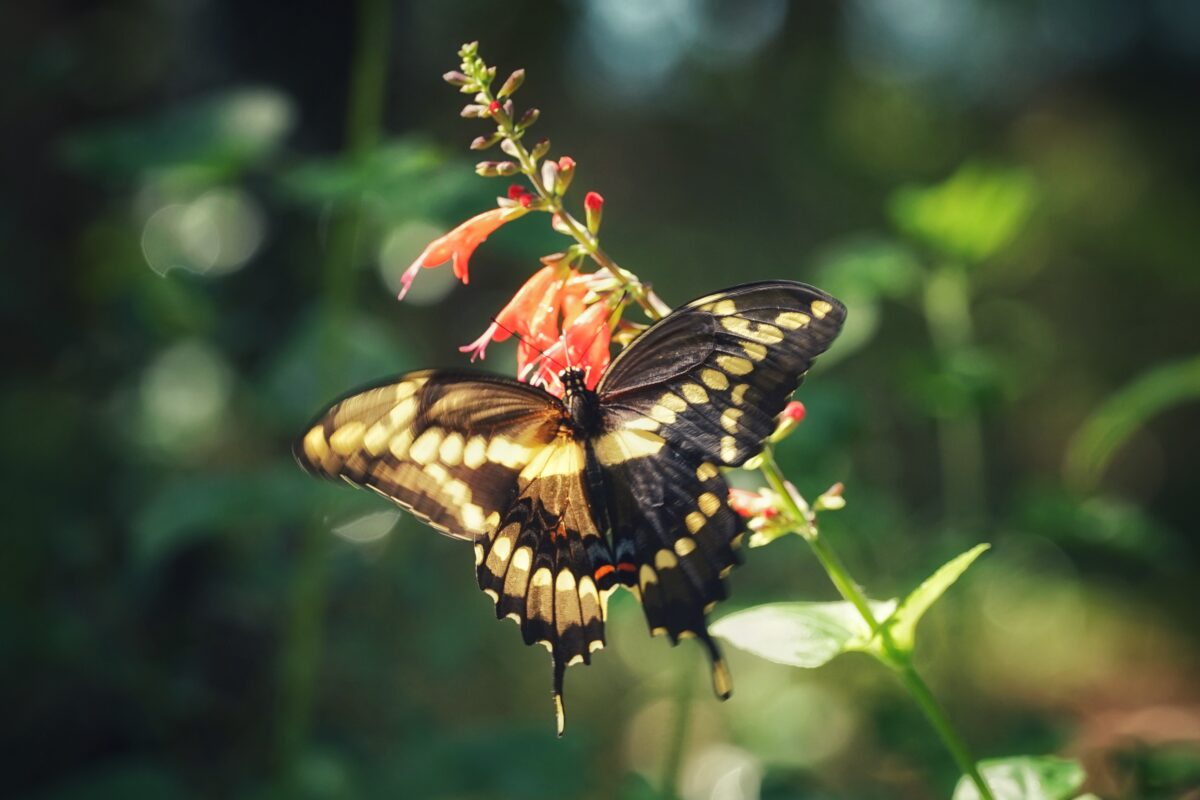
Tropical sage’s flower spike consists of many red, tubular blooms that are about 1” long. Flowers are loosely arranged in whorls and extend 90 degrees out from square, upright stems. Leaves are deltoid– to oval-shaped and have toothed margins and relatively long petioles. They are oppositely arranged. Seeds are born in capsules.
Family: Lamiaceae (Mint family)
Native range: Nearly throughout Florida
To see where natural populations of Tropical sage have been vouchered, visit florida.plantatlas.usf.edu.
Lifespan: Perennial
Soil: Moderately dry to moist, well-drained, sandy to rich soils
Exposure: Full sun to minimal shade
Growth habit: 2–4’+ tall
Propagation: Seed, division, cuttings
Florida regions of landscape suitability: North, Central, South
Garden tips: Tropical sage is highly adaptable to a variety of conditions. Use it in a mixed wildflower bed or an as accent by itself. It is self-sowing and its seeds remain in the soil and will germinate throughout the year. It is drought tolerant.
Tropical sage is often available from nurseries that specialize in Florida native plants. Visit www.PlantRealFlorida.org to find a nursery in your area.
Learn more about Tropical sage from the Florida Native Plant Society and the Institute for Regional Conservation.
For information on other Salvia species, see these resources:
